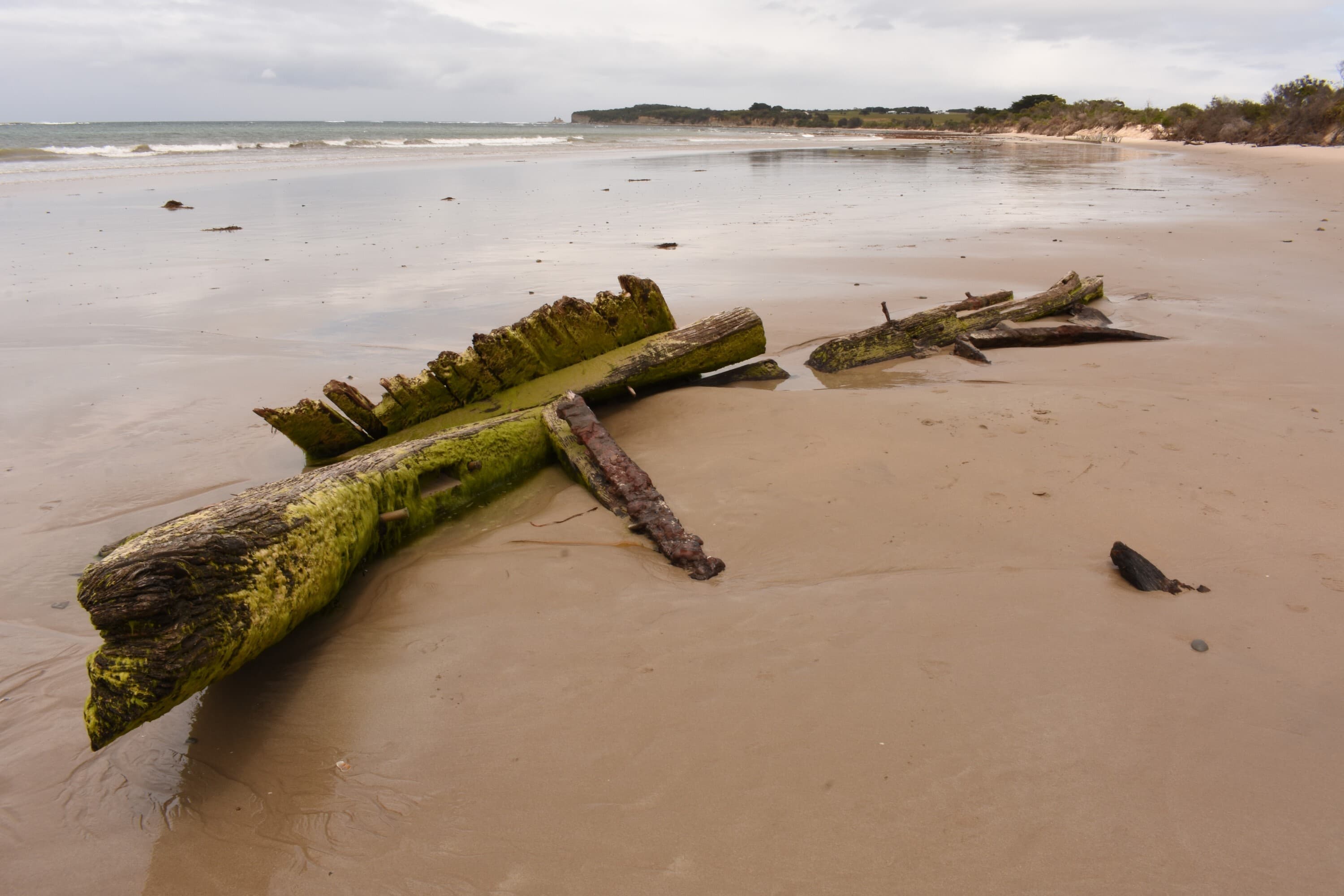Heritage and climate change case studies
These case studies explore the unique challenges of protecting heritage sites from climate risks.
- Heritage guidance
- Climate change

These 10 case studies show that there is no one-size-fits-all approach to assessing and managing the impacts of climate change on heritage places and objects.
Case studies
Because each place and object is unique, the assessment and management must also be tailored to their specific needs, guided by our principles.
Each case study explores the unique challenges of protecting heritage sites from climate risks. They focus on:
the range of climate change hazards and impacts faced
different vulnerabilities to climate change
how owners and managers are tackling these challenges.
These case studies aim to inform and inspire others facing similar issues.

The Amazon, Gippsland
This shipwreck in Gippsland is on a changing coastline that has lost much of its beach and dune sand. Stronger and more frequent storms are likely to impact the site. Photo © Heritage Victoria.

Dow’s Pharmacy, North-East Victoria
Dow’s Pharmacy is a 19th century brick building with a corrugated iron roof. Climate change will speed up the decay of its exterior and its pharmaceutical collection. Photo © National Trust

Great Ocean Road, Victoria’s western coastline
The Great Ocean Road is a long piece of coastal infrastructure. It is vulnerable to sea-level rise, storm surge, erosion, landslips and bushfires. Rising tourist numbers also add safety concerns. Photo © Belinda Van Zanen

ICI House, Melbourne CBD
ICI House's is a post-war high rise building vulnerable to rising heat from buildings and roads. It is also more vulnerable to more frequent and intense storms. Photo © Charter Hall

Mooramong Homestead, western Victoria
The 19th century farm complex with historical gardens is vulnerable to more frequent droughts and grassfires. The internal collection is also at risk of mould and damp from increased humidity due to heavier rain and storms. Photo © National Trust

Mount Buffalo Chalet, Victorian alpine region
The chalet is a remote timber building surrounded by an extensive garden and a forest. It is highly vulnerable to bushfires, storms and structural damage from falling trees. Photo © Parks Victoria

Point Cook Homestead and Stables, Point Cook
The bluestone and timber complex is in a low-lying coastal area at risk of flooding and storm surges within 50 years. Surrounded by native grassland, it also faces grassfire threats from rising summer temperatures. Photo © Parks Victoria

Rippon Lea House and Garden, Melbourne
Rippon Lea is an urban property with a large historical garden. It is especially vulnerable to storm damage and changes in water availability and quality. Photo © National Trust

Royal Botanic Gardens, Melbourne
As a city botanical garden with a large living plant collection, the Gardens are vulnerable to higher temperatures, frequent droughts and changing rainfall. These changes increase the risk of pests and diseases. Photo © GML Heritage

Warrnambool Christ Church, Warrnambool
The church’s coastal location exposes it to frequent, intense storms. Increased airborne salt, already a problem for its limestone and mortar, will worsen conservation issues. Photo © Catherine Millikan
Stay up-to-date with the latest decisions, events and news
